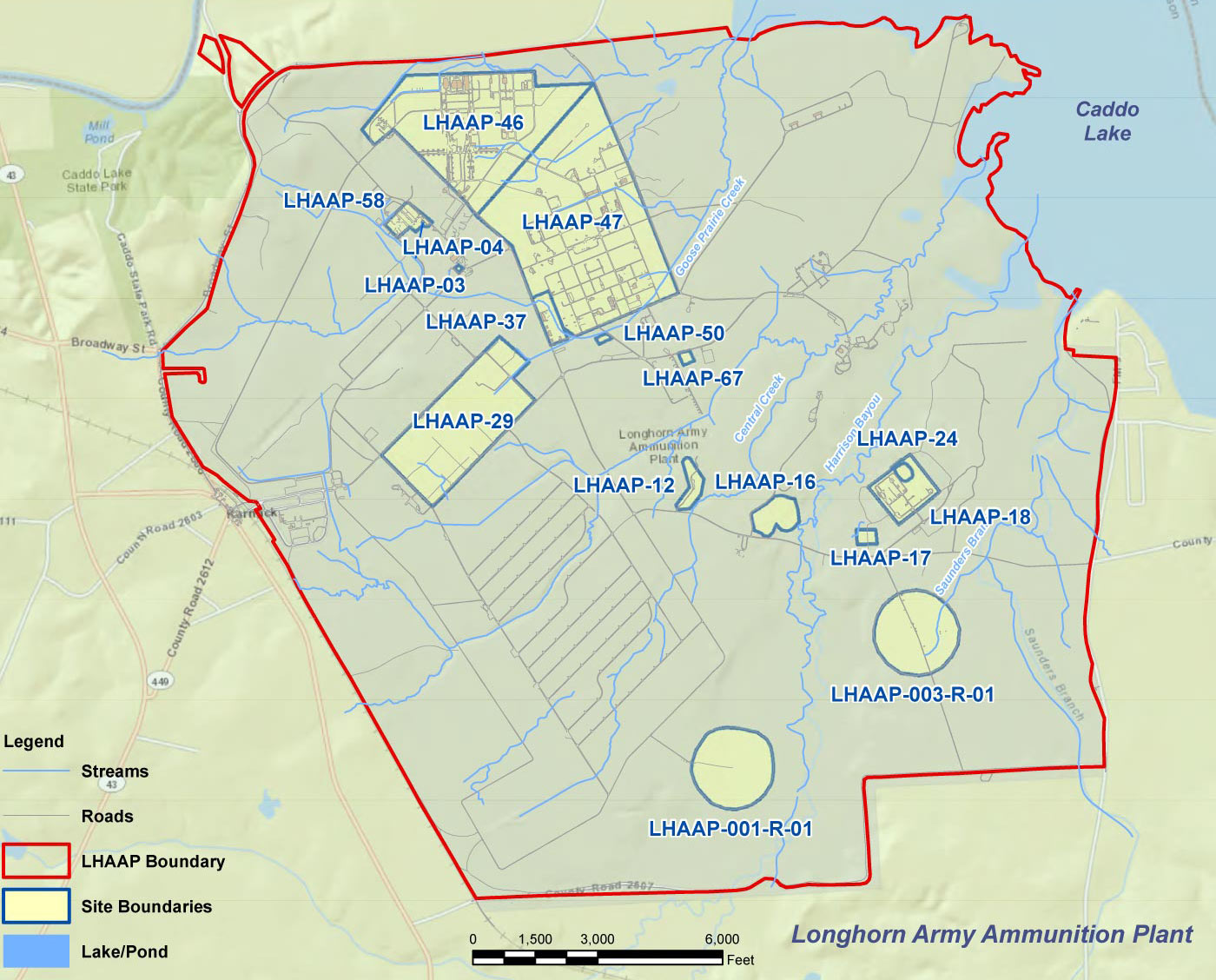Longhorn Army Ammunition Plant
Environmental Restoration Program
LHAAP-67
Site Description/History
The LHAAP-67 site is a former aboveground storage tank ( AST) farm located at the southeast corner of 48th Street and Ignatius Avenue in the central portion of LHAAP. The site covers an area of approximately 1.9 acres. The site topography is relatively flat. The nearest significant surface water body to LHAAP-67 is Central Creek located approximately 870 feet southeast of the site. Central Creek eventually flows into Caddo Lake.
When operational, LHAAP-67 consisted of seven ASTs of unknown size. The tanks were surrounded by earthen dikes designed to contain potential spills. The tanks were used for storage of No. 2 fuel oil, kerosene, and solvents. The ASTs have been removed and the only structure remaining at the site is a railroad bed.
Remediation Activities
Field investigations conducted between 1998 and 2007 identified soil and groundwater contamination at LHAAP-67 and determined its nature and extent. It is believed that historic releases from the ASTs at the site contaminated the soil and then leached from the soil into the groundwater. The investigation data and the subsequent risk assessments indicated that the soil at the LHAAP-67 site does not pose a risk to the environment or to human health under an industrial exposure scenario for a future maintenance worker. A relatively small area of contamination appears to be present within shallow zone groundwater which poses an unacceptable carcinogenic risk and non-carcinogenic hazard to a future maintenance worker under an industrial scenario. There is no groundwater contamination in the intermediate groundwater zone. The remedy for this site was implemented in 2013 and included monitored natural attenuation ( MNA) of groundwater and a groundwater use restriction Land Use Control ( LUC).
Contaminants of Concern
1,1- DCE, 1,2- DCA, 1,1,1- TCA, 1,1,2- TCA, and TCE in Groundwater
Current Phase
In the Remedial Action Operation phase including MNA (sampling and reporting), well maintenance, LUC documentation, reporting, and Five-Year Reviews.
Future Phase
Site Closeout
